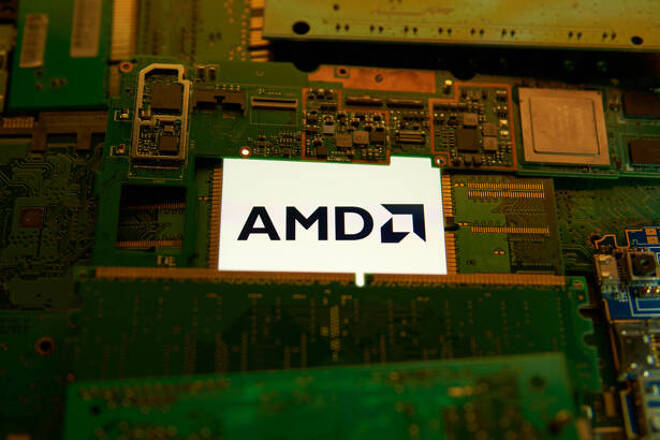Advertisement
Advertisement
Is It Time to Buy Advanced Micro Devices?
By:
Weekly Stochastics has rolled into a sell cycle that could easily generate a final leg down into double digits.
Advanced Micro Devices Inc. (AMD) beat Q2 2021 top and bottom line estimates in July, posting a profit of $0.63 per-share on an historic 99.3% year-over-year revenue increase to $3.85 billion. The company also raised Q3 and fiscal year guidance, setting off a powerful breakout above 7-month resistance in the 90s. The uptick continued into August, posting an all-time high at 122.49, ahead of profit-taking that gave up more than 20 points into last week’s low at 101.98.
Analyst Sets $135 Price Target
The stock turned higher this week, leading investors to wonder if now is the right time to buy AMD, especially with Dow component Intel Corp. (INTC) throwing in the towel and shifting its focus to foundry construction. There’s no easy answer, given the 37% advance off the July 27th low, which has set off short-term overbought technical readings. However, there’s also no guarantee the pullback will slice through the recent low and test breakout support.
BofA Securities analyst Vivek Arya took the bull case when the stock hit 106, expecting 25% additional upside. As he notes “We reiterate our Buy on AMD with a $135 price objective, or 25% upside to current levels. We see strong catch-up potential, despite the strongest upward EPS revisions in semis and with a clear path to doubling EPS to $5/share on consistent roadmap execution/share gains against INTC, who is distracted by expanding into non-core foundry market”.
Wall Street and Technical Outlook
On the other hand, Wall Street consensus has deteriorated, yielding an ‘Overweight’ rating based upon 16 ‘Buy’, 5 ‘Overweight’, 16 ‘Hold’, and 1 ‘Sell’ recommendation. Price targets now range from a low of $60 to a Street-high $170 while the stock is set to open Wednesday’s session just $3 below the median $110 target. This placement suggests analysts are squarely focused on chip shortages, rather than AMD’s quarterly performance.
AMD completed a breakout above the 2000 high at 48.50 in July 2020 and entered an historic advance that topped out in the 90s in September. December and January breakout attempts failed, yielding a steady decline, followed by a second quarter uptick and July breakout supported by heavy volume. The stock posted impressive gains before reversing in a correction that failed to reach the breakout level. Weekly Stochastics has now rolled into a sell cycle that could easily generate a final leg down into double digits and a lower risk buying opportunity.
For a look at all of today’s economic events, check out our economic calendar.
Disclosure: the author held no positions in aforementioned securities at the time of publication.
About the Author
Alan Farleyauthor
Alan Farley is the best-selling author of ‘The Master Swing Trader’ and market professional since the 1990s, with expertise in balance sheets, technical analysis, price action (tape reading), and broker performance.
Did you find this article useful?
Latest news and analysis
Advertisement
